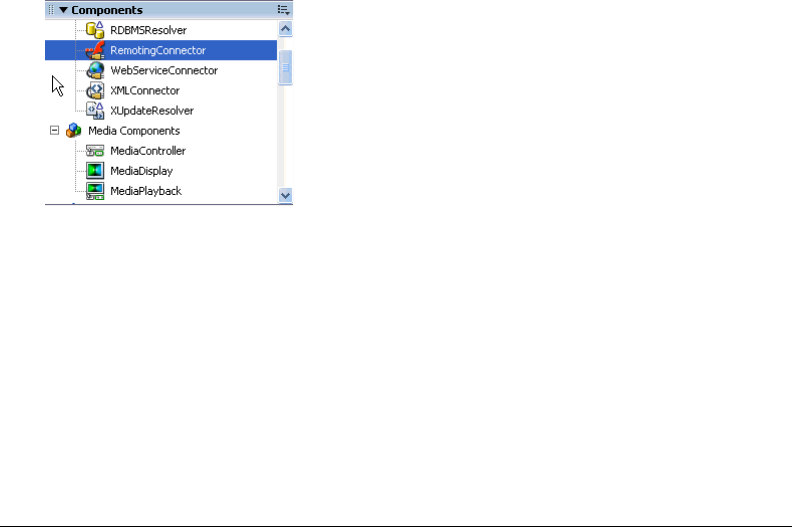User Guide
Table Of Contents
- Contents
- About Flash Remoting
- Getting Started
- Using Flash Remoting ActionScript
- Using the RemotingConnector component (Flash Professional only)
- Using Flash Remoting Data in ActionScript
- About Flash Remoting and data types
- Understanding Action Message Format
- Converting from ActionScript to application server data types
- Converting from application server data types to ActionScript
- ColdFusion to ActionScript data conversion issues
- About working with objects
- About working with RecordSet objects
- About working with XML
- The NetConnection Debugger
- Using Flash Remoting with ColdFusion MX
- Using Flash Remoting for Java
- About Flash Remoting for Java
- Calling Java classes or JavaBeans from ActionScript
- Calling Enterprise JavaBeans (EJBs) from Flash
- Calling servlets and JSPs from Flash
- Calling JMX MBeans from Flash (JRun only)
- Calling server-side ActionScript from Flash (JRun only)
- Handling function results in ActionScript
- Using Flash Remoting with JRun security
- Passing XML objects between Flash and Java
- Viewing Flash Remoting log entries
- Using Flash Remoting for Microsoft .NET
- Flash Remoting for Microsoft .NET
- Calling ASP.NET pages from Flash
- Making an ASP.NET page available to Flash Remoting
- Getting a reference to an ASPX-based service in ActionScript
- Invoking ASPX pages in ActionScript
- Using the Flash Remoting custom server control in ASPX pages
- Using the Flash Remoting namespace in code-behind files
- Using ASP.NET state management with Flash Remoting
- Using ASP.NET exception handling
- Using ADO.NET objects with Flash Remoting
- Displaying a RecordSet object in Flash with ActionScript
- Calling web services from Flash
- Calling ASP.NET assemblies from Flash
- Viewing Flash Remoting log entries
- Using NetServices and Connection Classes
- Index

53
CHAPTER 3
Using the RemotingConnector component
(Flash Professional only)
The RemotingConnector component, along with the WebServiceConnector component and the
XMLConnector component, implements the Remote Procedure Call (RPC) Component API,
which is a set of methods, properties, and events that define an easy way to send parameters to,
and receive results from, an external data source.
The RemotingConnector component enables you to access any remote service and function
exposed by Flash Remoting and to interactively create data bindings that update component
properties in your application. The most common applications of data binding are to gather
input parameters from various UI components to send to a service function and to display the
results of a service function call.
You can find the RemotingConnector component under the Data Components section of the
Components panel, as shown in the following example:
Typically, a remote service function accepts parameters and returns a result. Using Flash MX
Professional 2004 and the RemotingConnector component, you can both connect to a remote
service and bind the result of a remote service function to the properties of a UI component.
Note: A single instance of the RemotingConnector component allows you to make multiple calls to a
single remote method. To call a different remote method, you must create a different instance of the
RemotingConnector component.










